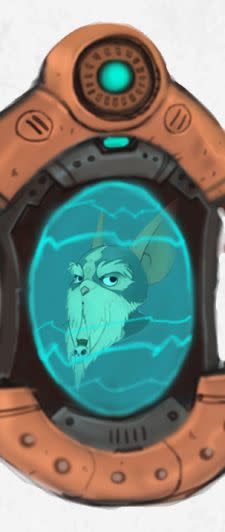PAX East 2014: WildStar's panel is all about the endgame
So what happens when when you reach the end of WildStar?
You've got a while to think about it, obviously, the game isn't even out just yet. But it's an obvious concern. People are going to hit the level cap, and what are they going to be doing then? Staring at the walls, singing songs, perhaps clawing desperately at the metaphorical walls in the hopes of getting the next major patch somewhat sooner?
According to the WildStar panel at PAX East, the development team is hoping to launch with a fairly robust endgame no matter what you're hoping to do. The panel went through pretty much every part of the game, from items to PvP to solo story questing, all of which is intended to work together to create an environment wherein you don't run out of things to do and don't find yourself forced out of what you find fun. How well it will work remains to be seen, but there's certainly a lot on the table to start with.

The first thing on display at the panel was one of the game's two 50-plus zones in place at launch, Grimvault. These zones are both meant to ensure that players have something to do in the open world or while solo -- there are areas devoted to solo play, areas focused on small groups, and other regions focused on large groups, all of which feature the somewhat expected array of daily and weekly quests to drive your activities. Dynamic events are also meant to spawn through the zones, ensuring that these zones don't become stagnant over time.
Ultimately, the goal is to give players things to do and progression even if they'd prefer to play on their own. There are also veteran-level dungeons and adventures available at the level cap as well, giving players further options if they're in the mood for an occasional group experience or if they really enjoy smaller group content.
If PvE isn't your thing, the game has a lot of PvP options. At launch, the game will have battlegrounds and arenas available in both rated and unrated versions, as well as open PvP servers and warplots at the top end of the leveling curve. The panel showed off Walatiki Temple (which has already been discussed) as well as the Halls of the Bloodsworn, which is a map based around capturing control points via a presence-based mechanic. One side attacks and tries to capture three rooms in sequence while the other team tries to stop them, then both teams switch roles and try to do the opposite.
Arenas, unlike battlegrounds, are meant as straight matches between players -- but not pure deathmatches. In an arena match, each side will have a shared set of lives, with 3v3 teams having six lives (arenas will be available in 2v2, 3v3, and 5v5, suggesting four lives for 2v2 and ten for 5v5). Each time a player on one side dies, the stock of remaining lives goes down by one and the player respawns. Once the lives are gone and the opposing team is dead, the match is over. Limiting shared respawns keeps matches moving quickly and places an emphasis on long-term player performance.
Next on the plate was a discussion of items and rewards, with the underlying philosophy being that players should be participating in the content they enjoy and being rewarded accordingly. The goal is to keep items interesting, with two systems helping accomplish that along the way -- runeforging and imbuements.
Runeforging is a system that should be fairly familiar to several players. You place runes in rune slots on equipment, with various runes offering stat boosts, special effects, and so forth. The additional wrinkles are twofold. First of all, the game's item sets are not on armor but are instead on runes, meaning that items with more rune slots can potentially lead to wearing multiple sets with according bonuses. Second, rune slots are random, not fixed. Sometimes you'll get an item with multiple slots, sometimes you won't, and they can come from anywhere.
Imbuements, on the other hand, are mini-quests that come along with items. Getting a powerful sword is nice, but an imbuement on the sword means that some of the weapon's power is locked away until you accomplish another goal. You never are forced to, and the item is quite powerful without it, but clearing the associated tasks allow you to unlock more potential abilities.
This is illustrated in depth with the game's artifact weapons, which are essentially hugely powerful weapons from the hardest content which have an even harder list of imbuements that can be unlocked, culminating in what's been described as an 80-person raid.

But what if you spend all of your time and never get all of these snazzy items? There's a catch for that in place as well via the elder gem system. Both earning experience and completing other endgame content at the level cap can reward you with elder gems, which can in turn be used to purchase items that would drop from bosses. You need to unlock the achievement for beating that boss first, but once you do, the goal is that strings of bad luck won't doom you to have sub-par items forever.
Of course, some people don't really care about progression, they care about the story. That's something on the mind of the team as well, and it was addressed via story instances for single players. Here, the focus is upon exploring lore, understanding what happened to the Eldan and what's going on with Nexus, and it culminates in cleaning up their mess.
Traditionally, MMOs have contained most of their big epic story content in endgame raids, which has the slight problem of most hardcore raiders not caring all that much about story. Instead, WildStar places the bulk of the main narrative in places for players to explore and understand at their leisure. That's not to say the raids won't have stories, just that the big dramatic arc and subsequent updates will be accessible to everyone who cares, not just the people with progression raiding on their minds.
Speaking of raids, what will those be like? In a word, hard. The goal is to make content that will challenge players and force them to really step up their game. It's also not meant to be the usual pattern of chewing though trash and then facing a boss after clearing away enough boring enemies.
As explained by the developers, what would normally be trash is instead thought of as base population, with the goal being that every encounter on the way to a boss is both a puzzle and a challenge. The content isn't even necessarily about fighting -- the game is structured so that you can be just as challenged by the environment as by a pack of enemies. And you can get rewards just by fighting through these sections of the raid, not only by clearing bosses, ensuring that the whole experience is fun and rewarding.
Well, it's fun if you like dying over and over to mechanics that knock out half of the raid over and over.
The whole panel ended with the Warplots trailer, which was short on hard details but long on character while also revealing that captured bosses will be usable as minions in Warplots. Jeremy Gaffney also mentioned that the game's discs have officially gone gold as of today, meaning that they're being manufactured and prepared for release. There's still another two months until you can play the game, but it seems like you'll have more than a couple things to do when that time comes. Even once you have the leveling out of the way.

Massively's on the ground in Boston during the weekend of April 11th to 13th, bringing you all the best news from PAX East 2014. Whether you're dying to know more about WildStar, Landmark, or any MMO in between, we aim to have it covered!


